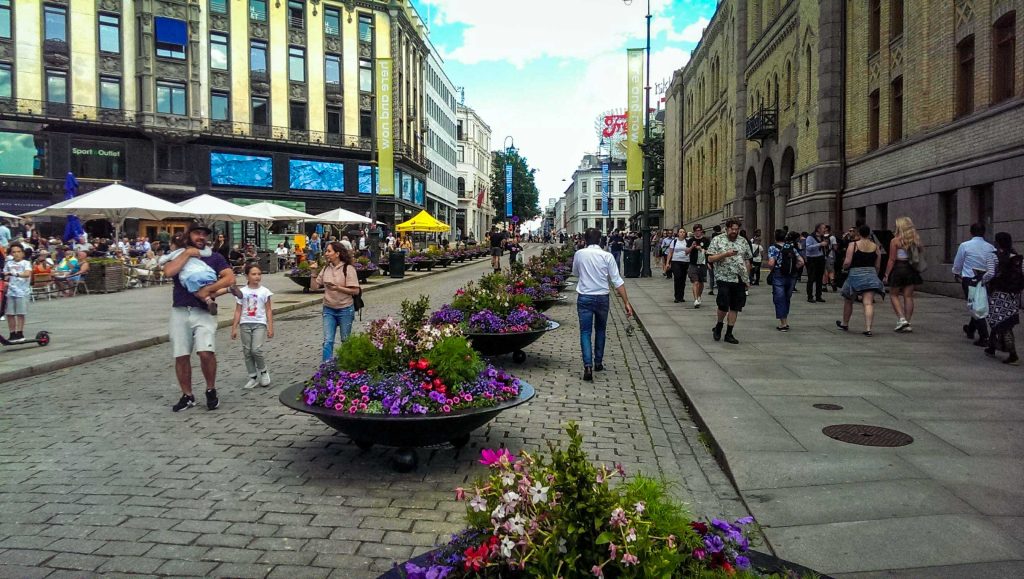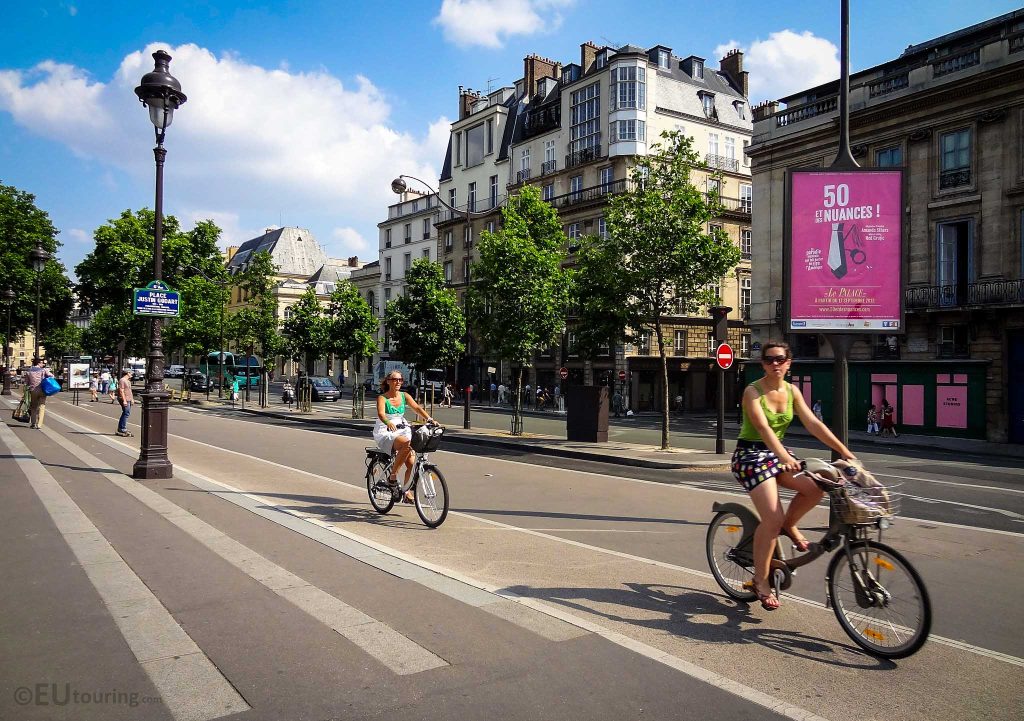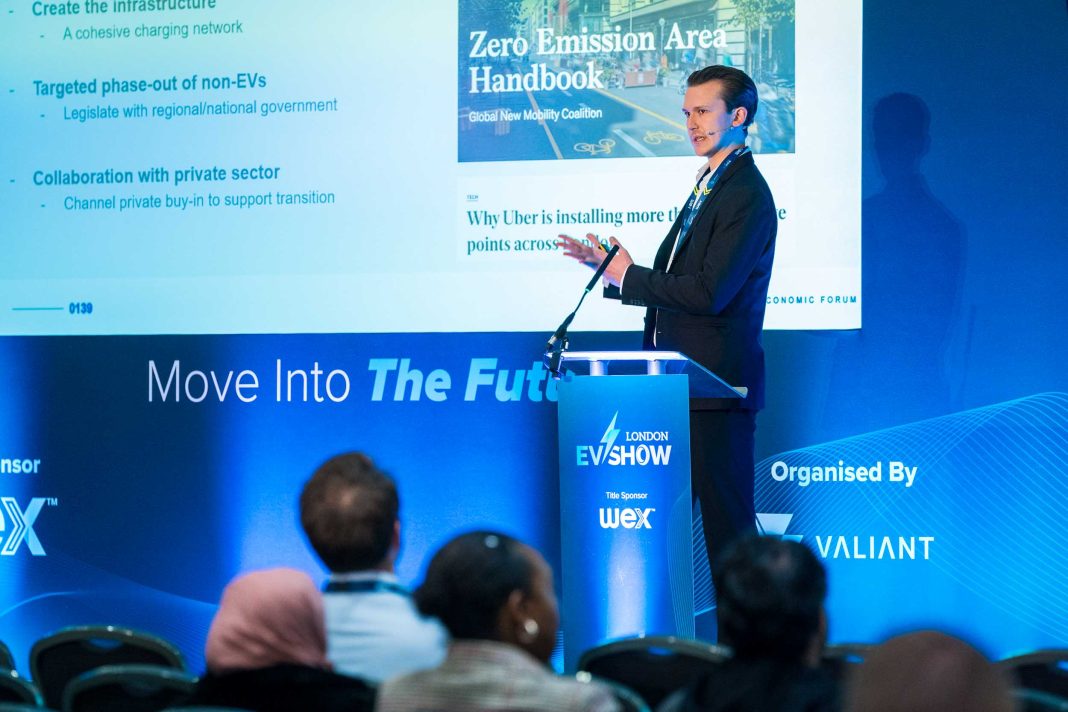Sustainable urban mobility is about so much more than halting climate change. Cities are rife with societal and economic challenges; finding better ways to move offers chances to level the playing field. We spoke to a former Young Leader and expert in the field, Jamie Wylie, about the practical measures that cities have implemented to connect both places and the people that inhabit them.
For decades, cities have been built for cars and favours the people that can afford them. Now we’re looking at our urban spaces differently and mobility is a major part in the transition to sustainability.
Of course, there’s an environmental aspect to that, but it’s not the full story. For anyone not owning a car, getting around can be challenging. If alternatives are available, inconvenience and expense can make them inaccessible.
With these issues in mind, it begs the question: what pushes change in urban mobility?
What’s Wrong with Mobility?
Jamie Wylie spends his days contemplating this question.
He works for the Global New Mobility Coalition (GNMC). A project of the World Economic Forum, the GNMC investigates what it takes to get people travelling in a more sustainable way. Jamie interests himself in the advances of urban mobility transitions, such as shared, electric, and connected options.
It’s a field he is fully at home in now, but our CityChanger never intended to make mobility his career. He caught the bug while working for an NGO directly after leaving university, and his enthusiasm was galvanised by his participation in the Young Leaders Programme at Urban Future’s 2019 conference, in Oslo.
Hearing first-hand what has ben achieved by the many CityChangers in attendance, this was where Jamie cottoned on to the fact that we can all genuinely influence our cities and the biggest challenges of our time if armed “with the right level of ambition”.
Very often the debates around sustainability and climate get focused on the national level. But, actually, there’s so much action being taken at a more local urban level that can make a huge difference.
That’s why he doesn’t approach the challenge of modern urban mobility with the sole purpose of eradicating carbon emissions.
“Of course, that’s got to underpin everything we do,” Jamie admits. But semantics matter: we’re talking about ‘mobility’ not just ‘transport’. Rather than a question of what vehicles we hop on or in, he tells us that sustainable urban mobility is not just a matter of moving people efficiently and in an environmentally-friendly way, but also in a healthy and enjoyable way.
Social (Im)mobility
Most cities are built in the typical car-obsessed twentieth-century urban design, which alienates many of their population.
“It’s often not people on the lowest incomes that own cars, and those that do are often forced into car ownership due to a lack of alternatives” our CityChanger explains.
It’s no wonder that people make unsustainable choices when the wider structures are not set up to support them.
Given the fact that urban populations are also commonly underserved by public transport, our cities are hard-wired to aggravate social divisions.
With the right plans in place, sustainable mobility can achieve much more than just reducing CO2 emissions.

Mobility For All
Jamie, based in London, sees issues of placemaking and walkability included more and more in the discussion. This, he says, highlights a growing recognition that “often the most important transport infrastructure cities need is the one right outside our homes, shops, and places of work” – the streets. Whichever modes of travel we choose, we still get from one to another and from door to door by foot.
Walking and rolling is mobility that connect us all, so it makes sense to start with this.
Jamie also warns us against getting caught in the middle of polarised discussions that pit transport modes against each other. “You very quickly get stuck in quite boring, quite divisive conversations pitting different transport modes against each other.” It is time-consuming and unproductive.
Some cities show us there is another way. Jamie highlights an example in Perth, Scotland, his home city, which shows how simple changes to street infrastructure can make a big difference.
In the process of redeveloping a central high street, the city levelled its pavements in line with the road. “Just by doing that, it really changes how vehicles and people interact with that space,” he tells us.
This has created a more pleasant street in an economically important area of the city centre. In his experience, drivers move more cautiously and people have a greater sense of priority. The dominance of vehicles has been rescinded without the need for restrictions to speed or access.
Connectivity is Crucial
If a city is serious about addressing social inequalities, decision-makers should press ahead with an integrated and reliable public transport network.
That involves frequent, well-connected services. The convenience of public transport must rival that of independent travel with efficient travel times, full-city access, and cutting waiting times at transfer hubs. It needs to be a holistic service that can also provide easily available, real-time information, Jamie notes.
With the prevalence of private devices, this could be in the form of apps that offer timetables, route planning, and contactless payments that eliminate the need for physical tickets.
But proceed with caution! Consideration should be spared for those without the tech to take advantage of this. Public service points should not be phased out.
Conscious Costing
On the subject of payments, where decent public transport does exist, smart pricing can increase the appeal of public transport.
Capping prices for journeys or offering cost-effective passes, as has been done in London and Vienna, improves affordability.
This format is increasingly being seen around Europe to great acclaim, and not just at the city scale: Jamie points out that the popularity of Germany’s €9 tickes trial in the summer of 2022 “shows that people are willing to use different modes if the price point is right”. The subsequent €49 monthly travel pass aims to build on that success.
But we need to follow a two-pronged strategy to leverage the shift towards sustainable mobility modes: push as well as pull.
Like aviation, motorised road travel is “massively undertaxed”, Jamie tells us. This makes driving an attractive option and – some argue – travel to work by car more affordable. Speaking out against the privilege of private mobility can therefore be highly controversial.
Our CityChanger points out that cities can be more subtle in their approach by introducing systems that reflect the impact of, and disproportionate space given to motor vehicles. Tolls and fees for using roads and parking spaces, for example.
These are not penalties, as many view London’s controversial ultra-low emission zone, but a fair representational charge and opportunity to fund municipal mobility improvements.
A big part of this is not just about changing the narrative of the role of cars, but also making the price reflect their societal cost as well.
Urban Mobility = Diversification
As has been proved in Paris, another effective mechanism for changing mobility behaviours is to just do something and see if it works.
The French capital transformed 50 km of city roads into temporary bike lanes to aid socially distanced travel during the COVID-19 pandemic.

Jamie tells us that initiatives like this this kept cities moving and directly aided efforts to limit the spread of disease. So many Parisians became avid cyclists that, due to demand, the bike lanes became permanent.
“It shows what’s possible when you do make things convenient and attractive for people,” Jamie points out.
Layering diverse mobility infrastructures gives people options. By ensuring the modes are interconnected, we level inequalities by catering for multistakeholder needs, such as trip-chaining and full-city access.
Jamie suggests there are several ways that help to move people en masse and relieve a lot of the pressure from the roads, or even reduce the need for so much road space at all. They include networks of connected cycle lanes, priority measures for public transport such as Bus Rapid Transit, and making use of new technology to make it more convenient and affordable.
The Cost of Transition
Largescale infrastructure work is costly, which can be weaponised by opponents to scupper plans.
In Jamie’s opinion, this is best handled by framing the debate in the right way – that is, by asking what are the costs of not doing it?
“The alternatives are equally or if not more expensive once you factor in impact on health, impact on climate, impact on congestion, impact on road safety. Once you factor that all in, the societal and economic cost is huge.”
Our CityChanger offers the example of Oslo’s car-free project, which he researched extensively in 2019. Designed to make the city centre more people-friendly, detractors exploited the potentially damaging economic impact on local businesses as a way to derail the initiative.
The response, however, was pragmatic. Business owners didn’t necessarily stand in the way; they asked for the impact to be evidenced.
“Oslo municipality set up a system whereby they monitored the economic impact on shops in the city centre over time” by tracking changes in trade and spending.
With the right data to hand, the municipality could demonstrate that removing vehicle access did not lead to negative economic changes overall, but actually increased the length of time people spent in the city centre. Intelligent, original, and creative mobility solutions, it seems, really does hold the keys to some of our cities’ most prominent social and economic challenges.


